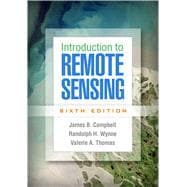Now in full color, the sixth edition of this leading text features new chapters on remote sensing platforms (including the latest satellite and unmanned aerial systems), agriculture (including agricultural analysis via satellite imagery), and forestry (including fuel type mapping and fire monitoring). The book has introduced tens of thousands of students to the fundamentals of collecting, analyzing, and interpreting remotely sensed images. It presents cutting-edge tools and practical applications to land and water use analysis, natural resource management, climate change adaptation, and more. Each concise chapter is designed as an independent unit that instructors can use in any sequence. Pedagogical features include over 400 figures, chapter-opening lists of topics, case studies, end-of-chapter review questions, and links to recommended online videos and tutorials.
New to This Edition
*Discussions of Landsat 8 and Sentinel-2; the growth of unmanned aerial systems; mobile data collection; current directions in climate change detection, fire monitoring, and disaster response; and other timely topics.
*Additional cases, such as river erosion; the impact of Hurricane Sandy on Mantoloking, New Jersey; and Miami Beach as an exemplar of challenges in coastal communities.
*Revised throughout with 60% new material, including hundreds of new full-color figures.
*New chapters on remote sensing platforms, agriculture, and forestry.








